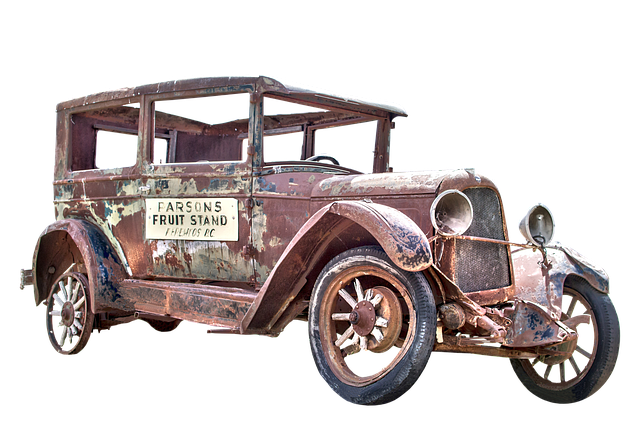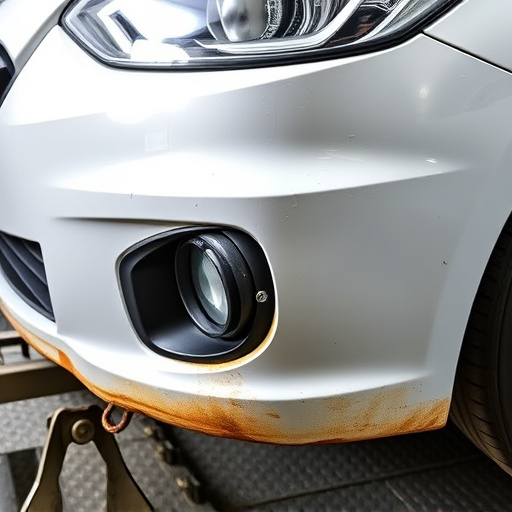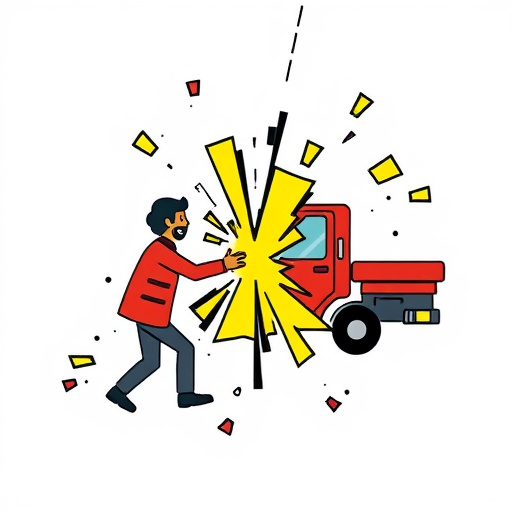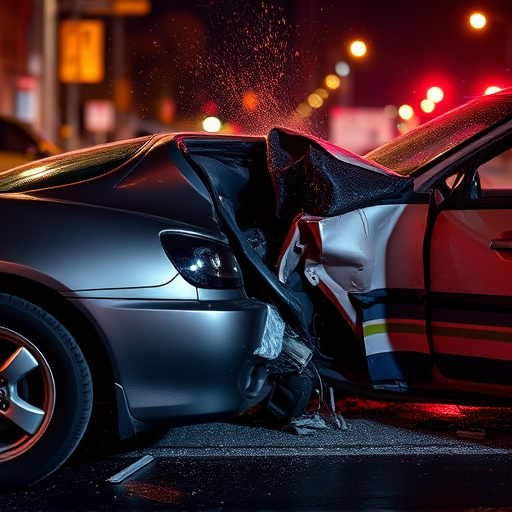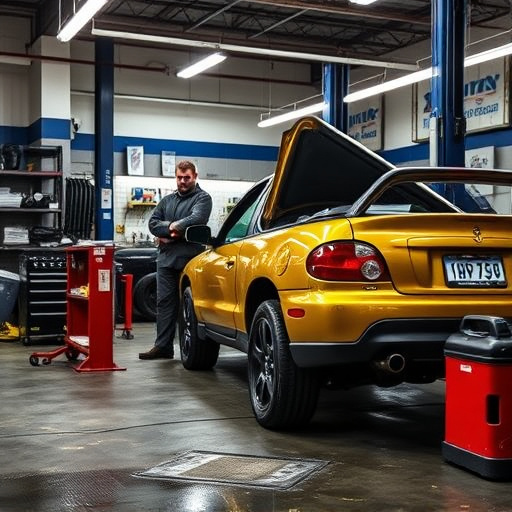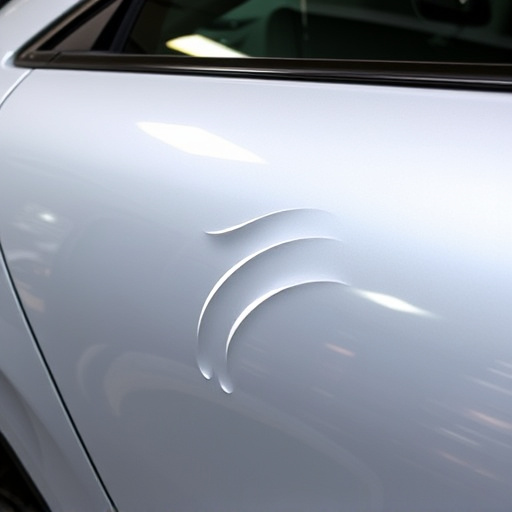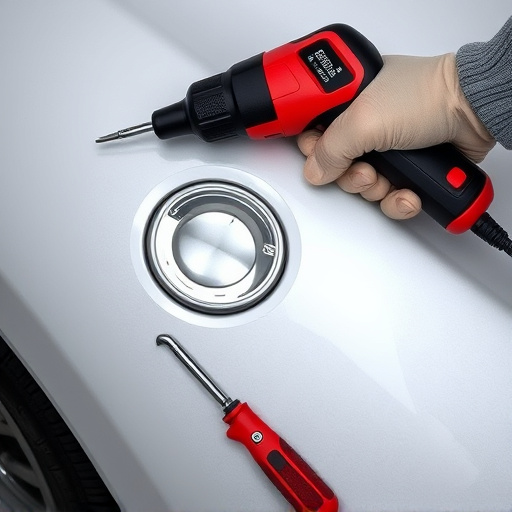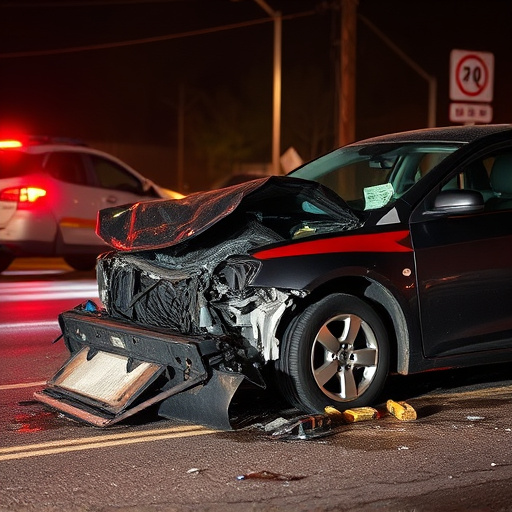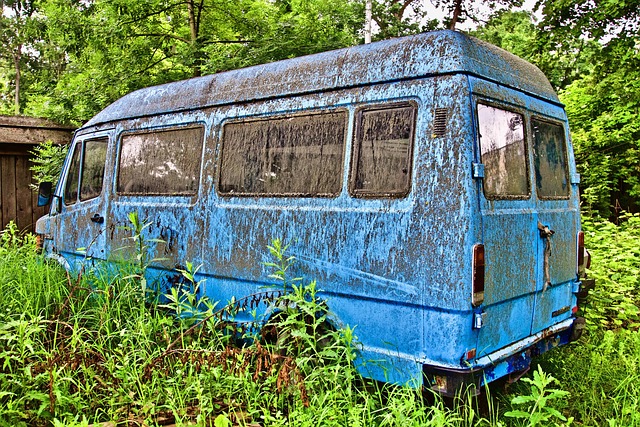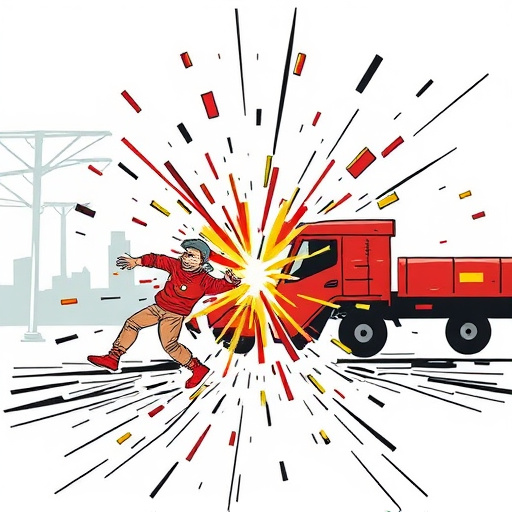Driveshaft collisions pose significant risks to commercial fleets due to high usage and varying road conditions. Regular inspection and maintenance prevent accidents by identifying issues early. Professional driveshaft collision repair services restore components, enhancing safety and reducing body repairs. The process involves detailed inspection, precise restoration using advanced equipment, and rigorous testing. Post-repair, optimizing fleet maintenance routines and integrating car paint services ensure long-term reliability and aesthetics.
In the realm of commercial vehicle maintenance, driveshaft collision repair is a critical yet often overlooked aspect. This article delves into the intricate details of addressing this challenge, focusing on understanding common causes of driveshaft collisions in fleets and implementing effective repair techniques. We explore optimized maintenance strategies post-repairs to ensure fleet safety and efficiency. By understanding these processes, fleet managers can minimize downtime and enhance overall vehicle longevity.
- Understanding Common Driveshaft Collisions in Fleets
- The Process of Effective Collision Repair Techniques
- Optimizing Fleet Maintenance Post-Repairs
Understanding Common Driveshaft Collisions in Fleets
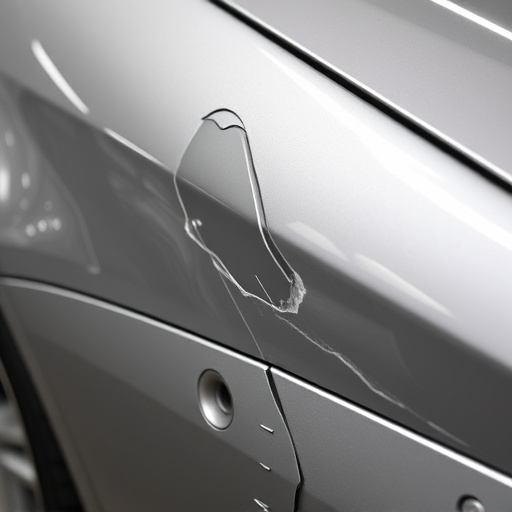
Driveshaft collisions are a significant concern for commercial vehicle fleets due to their frequent usage and exposure to various road conditions. Understanding common causes is key to implementing effective prevention strategies and minimizing downtime, which is crucial for maintaining fleet efficiency. These accidents often result from failed or damaged driveshafts, which can be attributed to several factors: sharp turns at high speeds, uneven road surfaces, or previous damage. Regular inspection and maintenance play a vital role in identifying potential issues before they escalate.
Promptly addressing even minor driveshaft concerns is essential to avoid more serious vehicle body repair needs. In the event of a collision, professional driveshaft collision repair services become indispensable for restoring these critical components to their optimal condition. Skilled technicians employ advanced techniques and high-quality parts for precise repairs, ensuring not only the integrity of the driveshaft but also the overall safety and reliability of commercial vehicles, thereby reducing the need for extensive car body restoration processes.
The Process of Effective Collision Repair Techniques

Effective driveshaft collision repair for commercial vehicle fleets involves a meticulous process that combines advanced techniques and specialized knowledge. It starts with a thorough inspection to identify the extent of damage, including any harm to the driveshaft—a critical component ensuring smooth power transmission. Skilled technicians then carefully disassemble affected parts, allowing them to assess and address each element individually.
The repair itself demands precision and expertise. Damaged components are either replaced or meticulously mended using state-of-the-art equipment. For instance, welders and machine tools enable the restoration of driveshafts to their original specifications, ensuring optimal performance and safety. Once repairs are complete, rigorous testing is conducted to verify functionality and address any lingering issues. This meticulous approach ensures not just effective collision repair services but also extends the lifespan of commercial fleet vehicles, thereby reducing long-term costs for businesses.
Optimizing Fleet Maintenance Post-Repairs

After undergoing driveshaft collision repair, optimizing fleet maintenance routines is a strategic step to ensure long-term reliability and safety for commercial vehicle fleets. Regular inspection and proactive maintenance can significantly reduce the risk of future damage, saving time and money in the process. By implementing a structured maintenance plan, fleet managers can identify potential issues early on and address them before they escalate into costly repairs.
This post-repair phase is also an opportune time to review and enhance auto body services, ensuring that each vehicle not only drives smoothly but also looks presentable. Car paint services might be required to restore the aesthetic appeal of damaged vehicles, thereby maintaining a professional image for the fleet. Integrating these services into the overall maintenance strategy allows for a comprehensive approach, where both functionality and aesthetics are prioritized, ultimately contributing to the longevity and efficiency of the vehicle fleet.
Driveshaft collision repair is a critical aspect of maintaining commercial vehicle fleets, ensuring safety and operational efficiency. By understanding common causes of such collisions, adopting efficient repair techniques, and implementing optimized maintenance post-repairs, fleet managers can significantly reduce downtime and improve overall performance. Effective driveshaft collision repair strategies are essential for keeping fleets on the road, minimizing costs, and maximizing productivity in today’s demanding transportation landscape.
